Green-green gardening
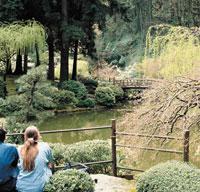
Environmental gardening differs from traditional gardening because of its importance to the environment. Environmental gardening tries to minimize the negative impact of traditional gardening on the environment, assuming functions it does not contemplate.
In fact, in traditional gardening, gardens are designed for aesthetic and leisure purposes. But this is not a benefit for the environment, which is often completely ruled out. For this reason, too many mineral fertilizers and pesticides are sometimes used, and irrigation plants are often planted instead of those most adapted to the environment. The introduction of foreign species is also at risk of some of them being invasive.
Benefits of green areas in cities
Environmental gardening seeks to reduce the harmful effects of conventional gardening and reinforce the beneficial effect of green areas. And it is that any garden has a beneficial effect in the city.
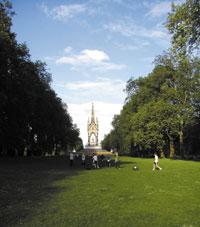
In 1962, a study was carried out at Hyde Park in London, in which it was found that the air that crossed the park had 25% less pollutants, that is, the park acted as a pollution filter. Similar results have been obtained in subsequent research, now demonstrating the storage capacity, absorption and transformation of contaminants.
Green areas with large trees are more efficient in cleaning the air. The surface of the leaves of the trees is one hundred times larger than that of the cup. This can detect many pollutants in the air. Some of these contaminants, mainly dust and solid particles, remain in the leaves. When it rains they pass to the ground and it absorbs them.
In addition, in the soil there are microorganisms that convert carbon monoxide into carbon dioxide.
On the other hand, trees absorb pollutants such as ozone and sulfur dioxide, abundant in cities, as well as heavy metals such as cadmium and lead.
In addition to air pollution, gardens reduce noise pollution. The leaves of trees and shrubs reduce noise, especially low-frequency sounds. That is why they are used as acoustic screens on the margins of the roads.

Green areas also affect the local climate. For example, trees absorb heat and solar radiation, so in summer they can be 6°C less under trees than in the city streets. In addition, water swept by trees increases relative humidity, increasing the feeling of freshness. When it rains, on the contrary, the strength of the stone is attenuated by the leaves and occurs in a similar way with the wind: on a surface between 10-15 of the height of the plant, the wind speed decreases in half.
Caring for the environment
To preserve the environment, commonly used pesticides are used in organic farming in environmental gardening. However, before using these products, the gardener uses various techniques to prevent diseases and pests.
On the one hand, it is recommended that soils are in good condition and adapted to plant species, thus avoiding the appearance of diseases. Of course, plants should also be appropriate for the climate and environment.
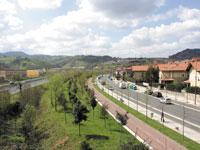
In addition, more different species, more difficulty in spreading diseases and pests. However, in the event that any plant is sick, the affected plant part or all will be removed and burned to prevent contamination of the rest. And it is convenient to disinfect the utensils used in pruning one plant before use with another. All this is called cultural struggle.
On the other hand, biological warfare is also used. It consists in the use of species that are parasitic or predatory to control the organisms that cause the pests. For example, ladybug feeds on adult plant lice and larvae, and spider catches many insects, including plant lice.
Plants also act against pests: citrus, lavender, rosemary and other aromatic plants scare away insects and elderberry separates moles. Plants and ivy with easy access to nectar attract insects that control harmful organisms.
These measures prevent the use of pesticides. It is also important to establish adequate water management systems, as well as to select plants that do not require continuous irrigation. Thus, water is not spent as much as in traditional gardens.
Nature as an example

In the designs of many traditional gardens, straight lines and geometric figures predominate. Cities are also like this: straight streets, square houses... In nature there are many different forms and nothing is so regular, while the forms of nature keep harmony and balance.
In environmental gardening nature is taken as a model and the geometric rigidity of traditional gardens is broken to achieve a natural effect. Thus, the terrestrial surface is not flat, but with slopes and curves. The paths are inclined and played with plants of different size and height. The plants are formed in the rock section and the stones themselves leave the ground, they are not supported on it. The ponds, instead of being concrete, are designed for their natural appearance, taking into account materials, background, margins and aquatic vegetation. Water jets are replaced by waterfalls... The goal is to avoid unnatural elements and achieve a harmonious and natural appearance.

In order for the green zone to be integrated into the environment, they try to use native species and imitate the surrounding plant community. However, in the past, numerous foreign species were introduced following the example of the British gardens, which are now perfectly adapted to the climate and the environment, grow faster than native ones and are cheaper.
The most significant plant communities in the Basque Country are oak, oak, beech and pine forests. Its implementation in the gardens is not easy, but for some citizens they are the closest representation of the natural environment of the place. Therefore, environmental gardening also plays a pedagogical role.
Come to the protection of the garden!
The use of native plants in the gardens is also beneficial for wildlife. In fact, many invertebrates feed on native plants, which attract other animals. Being a natural situation, these invertebrates do not become pests. On the contrary, the risk of pests with foreign species is much higher, since there are very few species that attack invertebrates that can come with foreign plants, and due to their rapid growth, predators cannot control them.
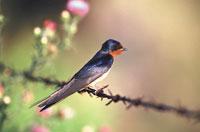

In addition, the fruits of native plants are edible in most cases and eat birds and rodents.
One of the forms of animal proliferation in the green zone is to provide them with special accommodation. The chargers, amilotxas, waist birds, ticks and other birds live in the holes of the trees, but in the trees of parks and gardens there are not many holes. Bird boxes can be installed to create suitable spaces for birds. It is not a useless benefit: these birds eat insects and help control pests.
The larger the green areas, the more possibilities are given to larger animals to grow in them. Lizards, satires, mice and squirrels reproduce more if they have enough space, and their predators, of course, if they have access to the green zone. To do this, connecting gateways can be built to the outside of the city.
Many times it is impossible to do all these things. Capacity is limited and in most municipalities the cost is still higher than the environment. However, more and more gardeners take into account the bases of environmental gardening and apply them as far as possible. Consequently, the creation of natural parks and the presence of common plant species in native forests in parks is more frequent. For the benefit of the environment and citizens.
Four cultures, four gardens
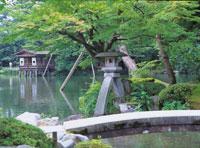
Throughout history there have been gardens of different styles adapted to the place and the time. In today's gardens, at least in part, effects are perceived from both.
Perhaps the strangest are of oriental style. The gardens of Japan are the example of this style: they seek balance of forces and are closely related to the tea ceremony. The ideal place to fill this rite is the garden, so they are very quiet places with stones that invite visitors to stay and enjoy the landscape.
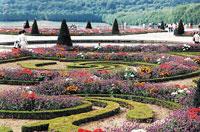
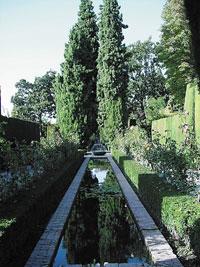
In Islamic gardens they try to imagine the paradise mentioned in the Quran. To escape the desert, heat and sand, they seek moisture and shade. For this they have trees and canals.
In the French-style gardens, geometry is taken great care of. The trees are in rows and the roads are well delimited and have great importance both the games created with water and the sculptures.
However, the English gardens have most influenced the gardening here. In this style one looks at nature and, coinciding with the time of romanticism, the gardens house small forests, caves, artificial hills, corners full of flowers... They also give special importance to foreign species, creating appropriate places for the implantation of exotic species.
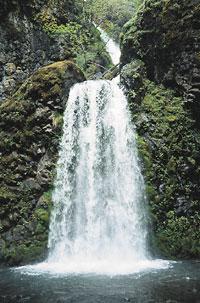
Buletina
Bidali zure helbide elektronikoa eta jaso asteroko buletina zure sarrera-ontzian











